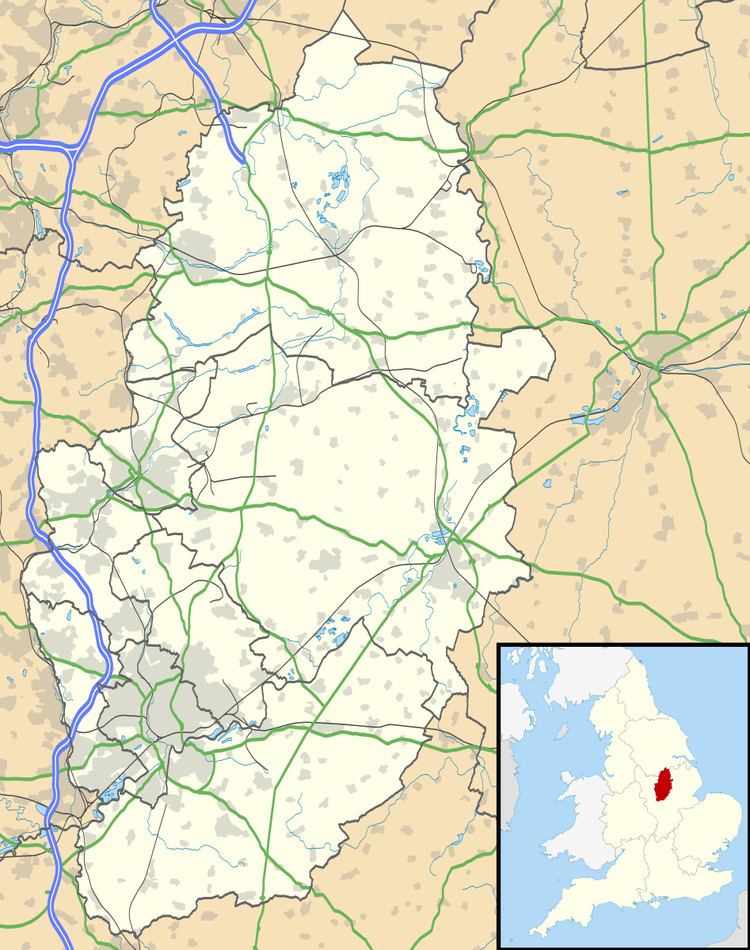Population 4,457 (2011) Sovereign state United Kingdom | OS grid reference SK592560 Local time Sunday 1:48 AM Dialling code 01623 UK parliament constituency Sherwood | |
 | ||
Weather 6°C, Wind SW at 19 km/h, 82% Humidity | ||
Blidworth is a village and civil parish approximately five miles east of Mansfield, Nottinghamshire, England. The population of the civil parish at the 2011 census was 4,457. Its history can be traced back to the 10th century, although many of the current houses were built in the first half of the 20th century to provide housing for workers at Blidworth Colliery (1926–1989).
Contents
- Map of Blidworth Mansfield UK
- Will scarlet s grave blidworth
- Toponomy
- Domesday Book Entry
- Robin Hood links
- The Druid Stone
- Church of St Mary of the Purification
- Blidworth Welfare Football Club
- Blidworth Mill
- References
Map of Blidworth, Mansfield, UK
Will scarlet s grave blidworth
Toponomy
Blidworth seems to contain the Old English personal name, Blitha', + worð (Old English) an enclosure, so 'Blitha's enclosure'.
Domesday Book Entry
The first recorded reference of Blidworth was in the Domesday Book, a national survey which was executed for William I of England in 1086. It is recorded as Blideworde, its recorded population was five households and the total tax assessed was 1.1 Geld Units.
Although this is the first recorded reference of Blidworth, the village is much older and was possibly used by the Romans.
Robin Hood links
According to legend, Will Scarlet is buried in the churchyard of the Church of St. Mary of the Purification. An unmarked grave stands near the iron gates of the churchyard, formed from the original apex of the church tower and other assorted stones, and is generally attributed to the outlaw. As outlaws were not generally buried in churchyards, though, it is more likely that, if he existed, Will Scarlet was buried in one of the much older graves to be found on the same hillside within the boundaries of Sherwood Forest.
Other local legends suggest that Blidworth was the birthplace of Maid Marian, although there is little or no evidence to support these claims.
The Druid Stone
On the outskirts of the village of Blidworth, on farmlands, lies a stone known locally as the Druid Stone (Grid Reference: SK5787-558), a pillar of cemented glacial gravel standing on a base of the Nottingham Castle rock formation (Bunter Pebble Beds). This monumental object is 14 ft high, 84 ft around the base and has a hollow centre large enough for a man to pass through.
Though known as the Druid Stone, there is no evidence to suggest that it has ever been used by Druids. It is a naturally forming outcrop.
Church of St. Mary of the Purification
See Church of St. Mary of the Purification, Blidworth.
Blidworth Welfare Football Club
Blidworth Welfare were formed in 1926. They have played in the Central Midlands Football League and the Northern Counties East Football League.
In 1982, they changed their name from Folk House Old Boys F.C. to their present name.
Also see, Wikipedia Page on Blidworth Welfare F.C.
Blidworth Mill
This Subscription Mill was built c. 1816 as a three-storey brick tower windmill. With 3 pairs of millstones, it was working in 1892 but was dismantled some time during the First World War. It had 4 double patent sails, an ogee cap and an 8-bladed fantail. Millers listed as working the mill include Foster (1842), Edmund Clark (1864 and Thomas Penford (1904).The tower still stands to a height of 26 feet on the west of the village (grid reference SK585557).
One of the post windmills from Nottingham was moved to Blidworth in the 1850s, and was later moved to Hemsworth. A post windmill at Windmill Close, between Mount Pleasant and Belle Vue Lane was recorded in 1842; the owner was John Need and the tenant miller Thomas Blatherwick. A post windmill in Mill Croft, behind the Wesleyan Chapel, was worked by miller William Holloway in 1864. It was demolished c. 1878.
